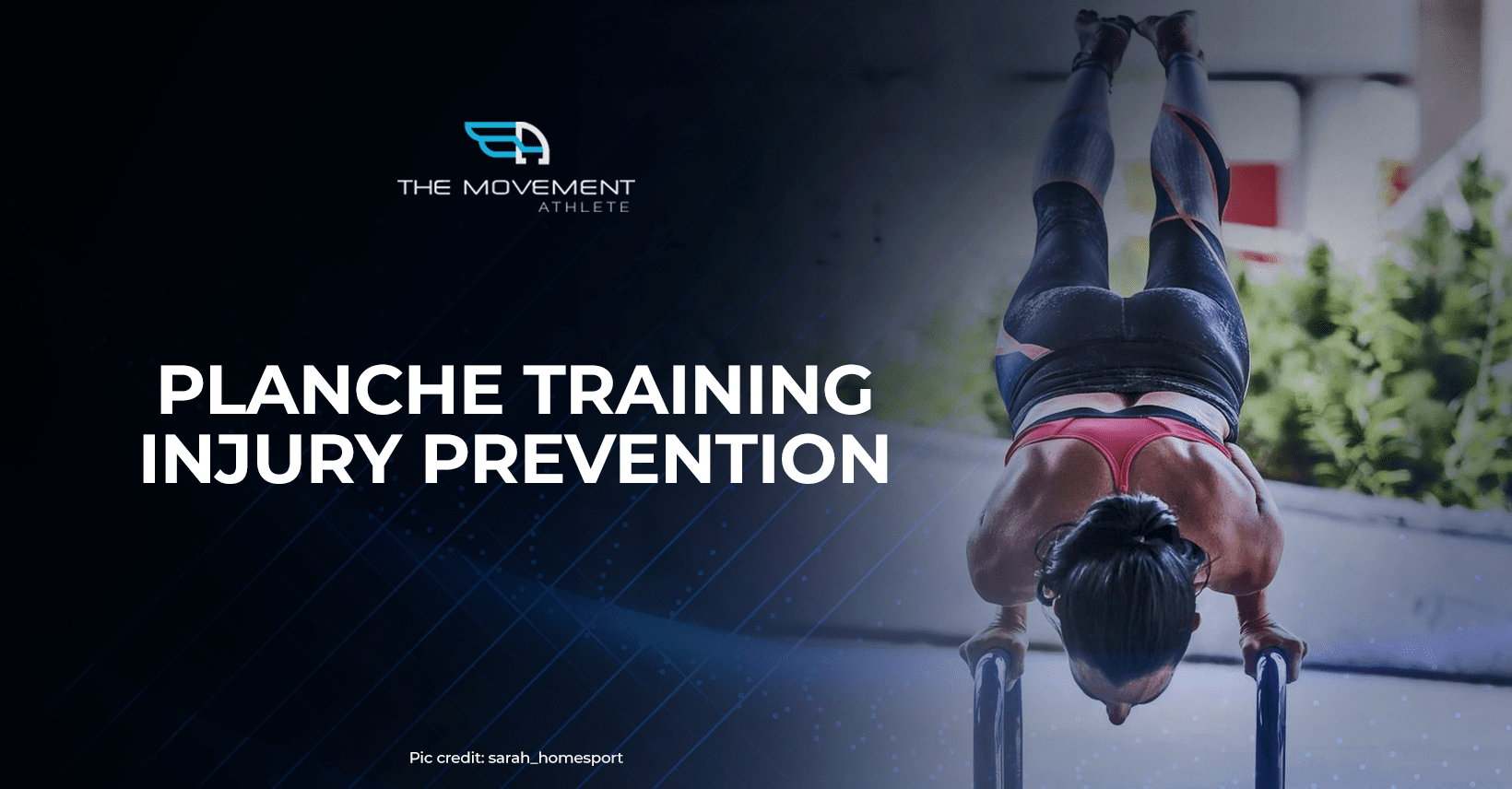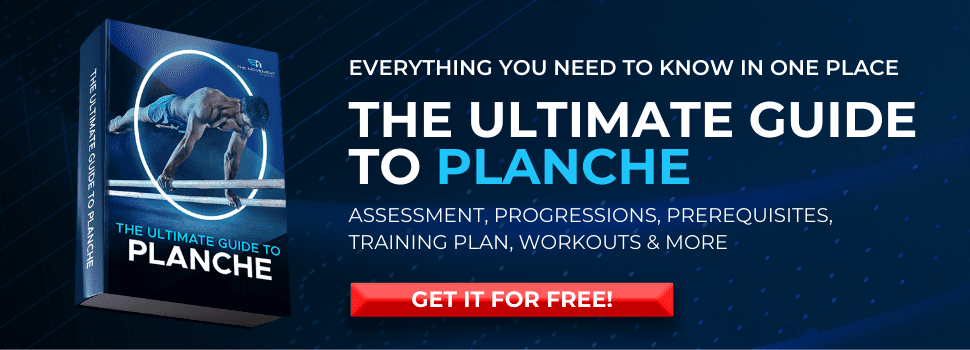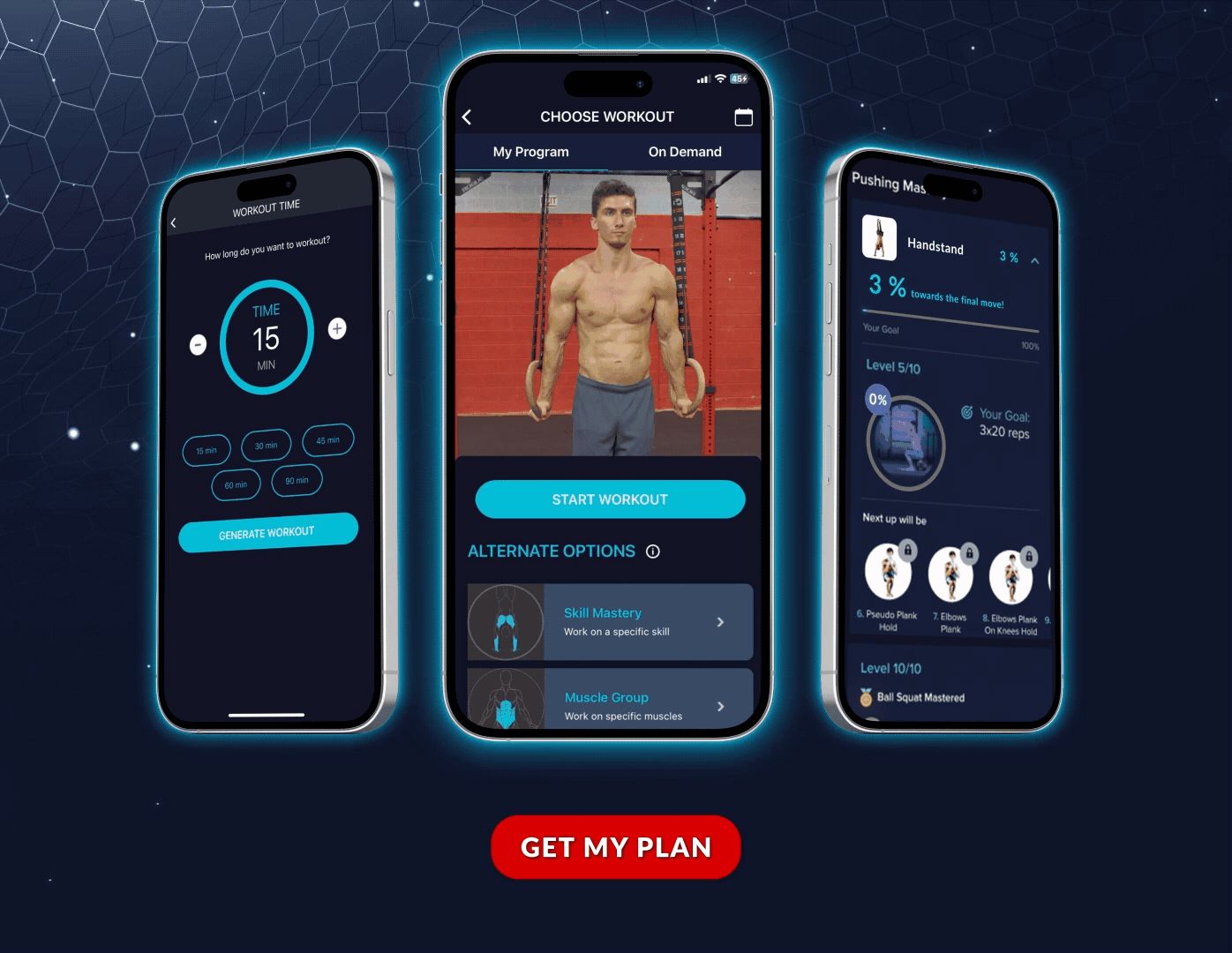

📖 Read Time: 6 Minutes
🏋️ Join the tribe of Movement & Calisthenics Athletes
People just like you that are working with their own body weight to get strength, lose fat, build muscle, recover from injuries and live their best lives!
In This Article:
👆 As you know by now, planche is such a humbling advanced calisthenics skill that demands the utmost respect from any individual no matter the skill level.
While the basic requirements to start the planche journey is relatively easy to attain, the strength, mobility, and technique to hold a planche are undeniably challenging and steep. You may read more of this in the article “Planche: Muscles Used & Requirement.”
Even elite athletes who make planche seem like a walk in the park still experience high demands on their bodies when performing the move. ✨
That being said, planche places you at a higher risk of injury compared to other skills. Such high reward skills come with these slight “drawbacks”.
Any injuries, especially when concerning the prime movers of planche, won’t only slow down your progress but could even throw away any progress that you have made. That’s why it’s very important to train as safely as possible.
It’s inevitable to completely remove any risks with any movement or activity. As you become more active and aspire to attain more advanced skills, these risks come to tag along.
No need to fret! You cannot train with 0% risks but you can massively minimize the risks of injury if you train smartly. 🧠
Here are the tips you need to remember in order to train safely, make progress faster, and achieve the planche earlier. If you’re ready to start your planche journey with a personalized approach, take our free assessment to get a training plan tailored to your current level.
✊ Mobility exercises
You should have known by now that planche demands an exceeding amount of upper body strength, but it’s not all brute strength!
In order to perform the planche, you must also have access to proper mobility in specific areas of your body mainly your wrists and shoulders. Without mobility in these two, you won’t even come close to raising your body off the ground.
As discussed in our previous article “What is a Planche?“, holding the balanced position of planche requires an extreme angle for both your wrists and anterior deltoids. The tremendous pressure put on these two requires both strength and mobility.
Wrists
There are different hand placements you can use to perform a planche. But regardless of hand placement, all of them need your wrists angled at an extreme point.
As a result, your wrists are at the highest risk of injury especially when the joint isn’t used to such an awkward position while holding a ton of pressure.
Minimizing the risk of injury on your wrists is easy to do as it’s also highly productive to your planche journey. 💪
Wrist mobility exercises prior to your planche training are easy yet highly effective. As simple as wrists rolls, rocks and rotations will produce results. They are your best friend to keep your wrists healthy and strong for your planche journey. The main thing you need to remember is to keep it slow, steady, and consistent.
Shoulders
Your shoulders work the most alongside your wrists for you to perform the planche. It has the key role to stabilize everything into place while keeping an extremely awkward angle and position which most people aren’t trained to do.
Proper shoulder mobility is key for a proper and efficient planche hold.
And when we’re talking about shoulder mobility, we’re specifically talking about two things: Shoulder depression and scapula (shoulder blade) protraction. These two help your shoulders stay healthy when performing such an advanced skill.
Shoulder depression and scapula protraction can be done with very simple cues. Simply push your shoulders down away from your ears (depression) and from the ground (protraction).
It’s such a simple motion that most people tend to overlook and underestimate. Most people will realize the difficulty of this position and how their limited motion could be when trying it for the first time with maximum effort.
Although you can get away and be able to hold a horrendous planche without these two, it places your shoulders at such a high risk of injury.
Proper preparatory exercises to increase shoulder mobility not only decrease the risk of injury, but it will also help you maximize your muscle performance when holding a planche. We’ll talk about more of this in our progression section.
✊ Rest
Like training with any other goals, rest is as important as the actual activity and nutrition. There are two categories of rest we’re going to discuss: inside and outside your training.
Inside training rest
A strength skill such as a planche is quite similar to strength training. Rest periods are kept at a higher range so your body can rest to be able to perform a high intensity exercise such as the planche variation. A good 3-5 minute rest is not too much when training the planche variation suitable for your level. This rest period keeps your muscles fresh each set as form is very important. You don’t want to be breaking form during your sets. ⏰
When you train with too little rest, expect form breakdown and a higher percentage of injury.
Accessory exercises for planche can be trained for lower range rest periods ranging from 30 seconds to 2 mins.
Moreover on training rest, training frequency should also be taken into account. I know you would love to learn a full planche as soon as possible, but this doesn’t mean you would need to train 7 days a week.
Training frequency should be juggled around 4-6 times per week depending on each session’s intensity. The more frequent your planche session, more moderate your intensity must be in order for your body to recover. The less frequent, the higher the intensity you can allocate.
Not providing sufficient rest periods when loading your body with a demanding session from planche training is a disastrous way to over fatigue your body and ultimately lead to injury.
Off training rest
Similar to your rest periods during your training, off training rest is also essential to increase performance in and outside your training, and decrease risk of injury.
Get high-quality zzz’s for your preferred amount of hours (normally 7-8 hours will do). This will prepare your body for the demands of your training both physically and mentally. Keeping you sharp and focused. 😴
Along with proper rest is good stress management. Our daily lives could sometimes be overwhelming. It is important to have a good control on your life so you can train with maximum effort and avoid any injuries.
Control your life for better body control.
✊ Listen to your body
Pain is a response of our body to something it doesn’t like and knows that it will eventually produce catastrophic consequences. 🚨
When training, immediately stop what you’re doing when you experience pain. What we are looking for is discomfort, but never pain. Take notice especially on the wrists as these are the most likely to experience it.
Train hard but never forget to train smart as well.
✊ Respect planche
Best way to avoid injuries when training this skill is just by respecting the difficulty of the move. Planche is a complex skill that tests your body in a very unusual position and at a high level as well.
Here are the reminders on how you can respect planche and avoid any injuries during your planche journey.
Elbow joint development
A proper planche can only be called a planche (with the exception of bent arm planche, of course!) when you perform it with straight arms. This position not only puts heavy load on your anterior deltoids, arms, and wrists, it also places a significant amount of pressure on your elbow joints.
We might be able to recover and build muscles fast, but our connective tissues in our joints do not get stronger as fast as our muscles. So even if you know you have the muscle strength for planche, ease in slowly when building your joint strength.
There’s no way to expedite the process. Keep consistent training and don’t rush your straight-arm strength development to avoid any injuries.
Warm ups!
This goes for any goals you may want for your workout. Proper, goal-oriented warm-up is essential to maximize your performance and avoid any injuries. This holds true especially for advanced calisthenics skill training such as a planche.
Warm-up primes your body for the heavy loading it will experience in the training proper of your session.
Do warm-ups specific for the planche. Target your shoulders, chest, wrists, arms: basically the whole upper body and core.
You do not need to jog for 15 minutes for a planche. 🏃♂️
Proper progressions
The only way to progress fast in planche training (and in your calisthenics journey as a whole) is by following a good set of progressions.
Progressions are sets of exercises arranged in difficulty so you can build your strength, skill, muscles and technique specific for your goal. These exercises are arranged so wherever you are in your fitness journey, you will find a suitable exercise to give you direction towards your goal.
In terms of planche, a high-level skill, progressions lets you progress in the SAFEST, FASTEST and MOST EFFICIENT manner.
This means less injuries as your body will be able to slowly adapt to each progression. There won’t be any sudden jumps of exercise intensity which could potentially lead to injuries.
Follow a proper progression like what we have for Movement Athletes. You can check it out this article: Ultimate Planche Progression for Fastest, Safest and Most Efficient Progress!
As we have already emphasized all throughout, planche is an advanced skill that’s demanding on the body but provides a very rewarding achievement. Every effort and time spent on planche is worth it, but you have to work smart and slowly.
Remember: each and every one of us has only one body to take care of. No matter how fast we want to learn the move, our bodies can only do so much.
Take care of your body first and you will be shocked how fast you will be able to learn planche. ⚡

Related Articles You’ll Love:
Ready to get started?
Get your free personalized training plan now
